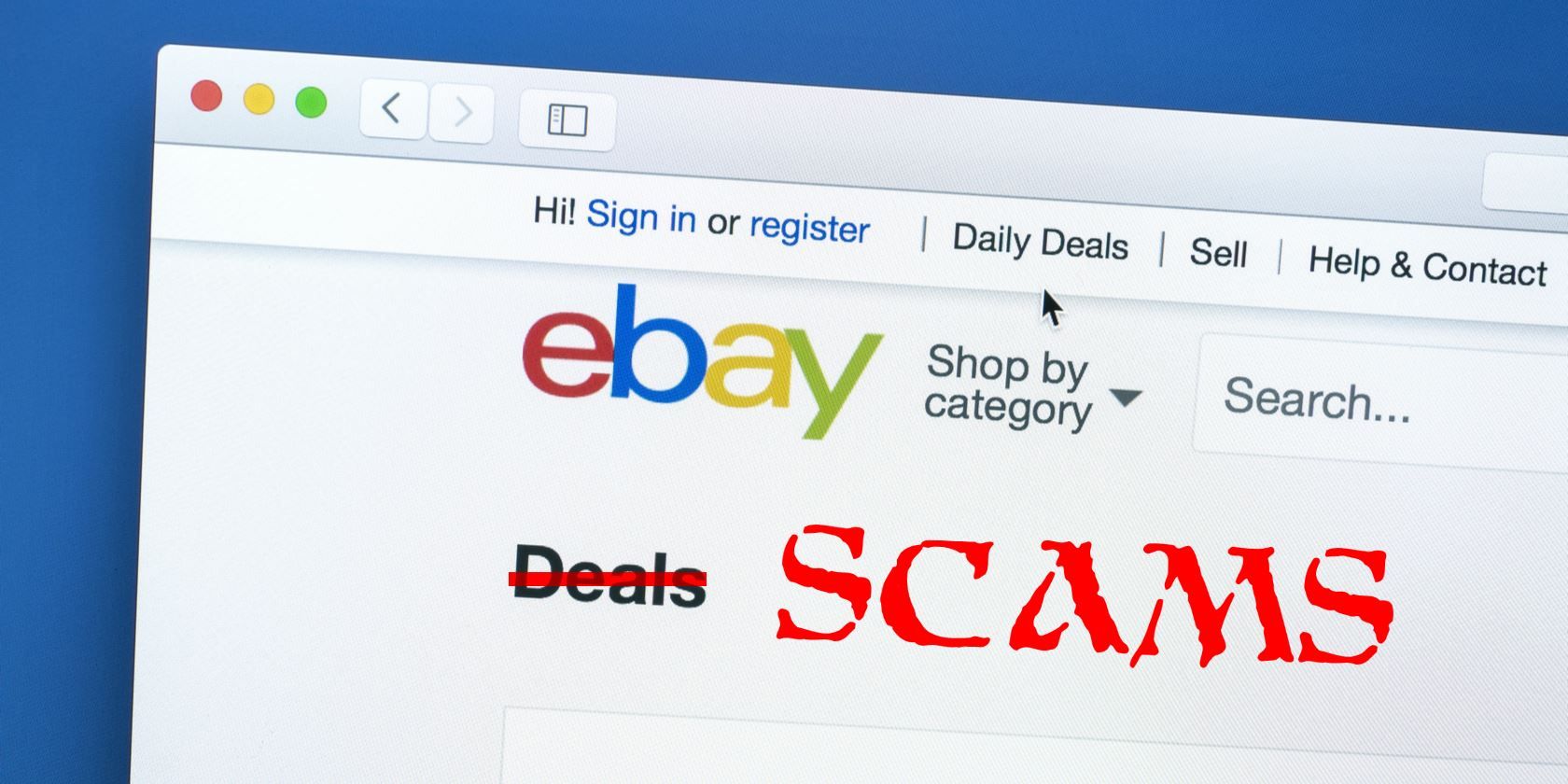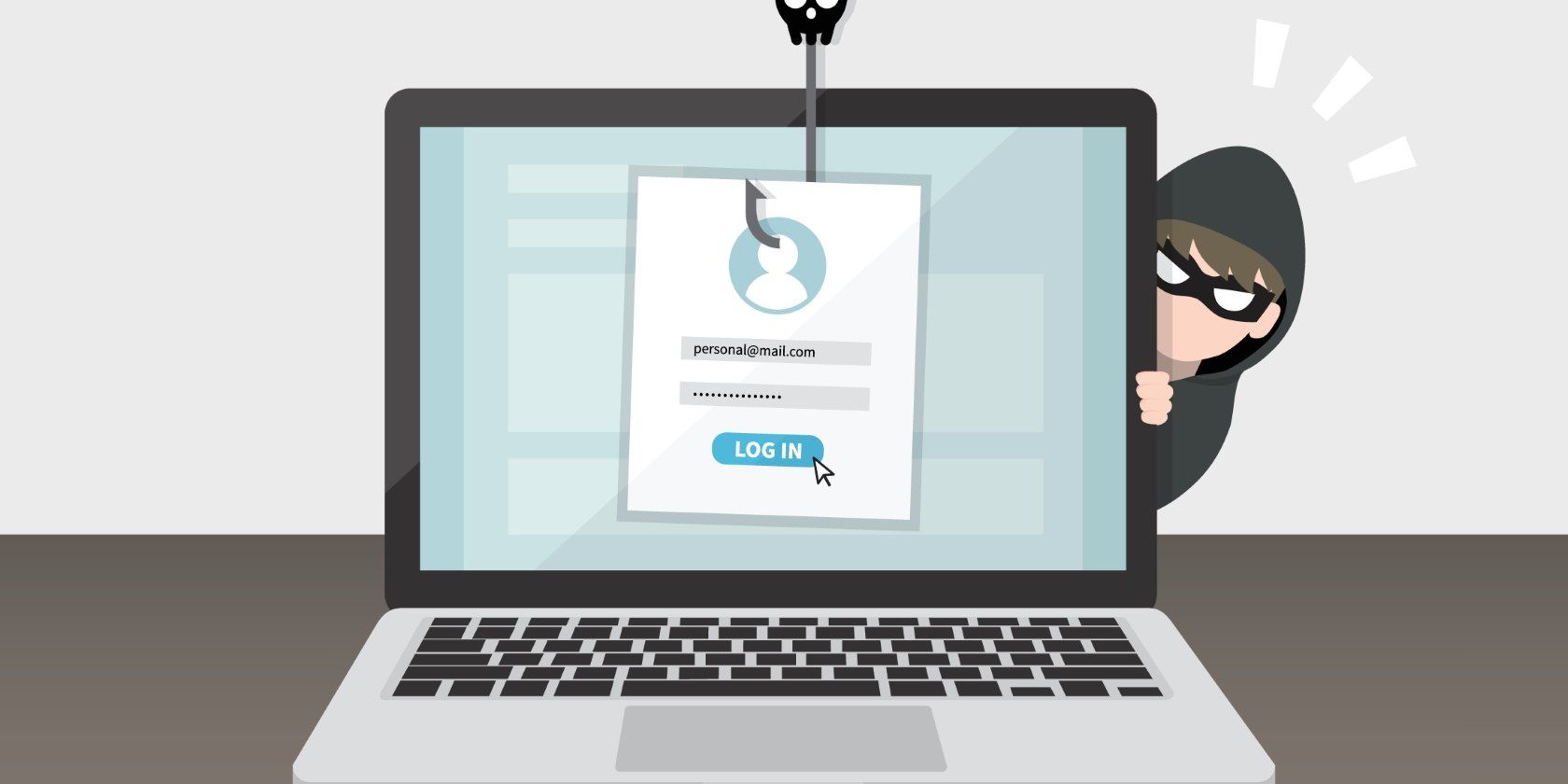eBay is a legitimate shopping resource, and most people have good experiences while using the site. However, there are many eBay scams that you need to watch out for to protect yourself.
Whether you buy or sell on the site, you should know about major eBay scams so you don't become a victim. Here are the most common eBay scams to know about: some that affect eBay buyers, others that threaten sellers, and even one that applies to all eBay users.
eBay Scams to Avoid as a Buyer
In general, eBay buyers have less to worry about because eBay tends to side with the purchaser in disputes. Buyers don't need much evidence to claim foul play—in most cases, eBay will take you at your word.
But there are still a few ways you can fall for a scam as an eBay buyer. Here are a few to watch out for.
1. Seller Runs Off With Your Money
This scam is simple: you send payment and nothing happens.
For most listings, the eBay Money Back Guarantee protects you if the seller never actually ships you the item, or sends you something that's broken. But there are several categories of items that aren't covered by the eBay Money Back Guarantee, including:
- Vehicles
- Real estate
- Digital content, including NFTs
- Websites and businesses for sale
- Classified ads
- Services
- Travel tickets or vouchers
- Some kinds of business equipment
Note that most of the best-selling items on eBay don't fall under these categories. Rather, these tend to be high-value transactions, typically in the range of thousands of dollars. It's reasonable for eBay to make exceptions for these kinds of items.
How do you stay safe from this? Even if you check a seller's feedback and it looks overwhelmingly positive, you can't be sure that the item you're eyeing is legitimate. They might be playing the long con: building up a spectacular rating over tons of tiny transactions, then scamming you out of this one huge transaction.
All you can do is avoid shopping in categories that aren't covered by eBay's Money Back Guarantee. Make sure you understand the terms on that page so you're safeguarded by buyer protection if a seller doesn't hold up their end of a deal.
2. Seller Ships With an Incorrect Name
In this scenario, the seller puts up a normal listing—usually with a Buy Now option but not always. When you purchase it, the seller properly ships the package to your address but intentionally uses an incorrect name, making you think that you received someone else's package.
Being a good citizen, you return the package to the post office or shipping company. Unfortunately, this marks your package as "Refused" or "Returned," which voids the eBay Money Back Guarantee. The terms state that refused deliveries are not covered, unless the item arrived with additional shipping costs because the seller didn't apply enough postage.
The money that you sent to the seller is now theirs to keep, and you have nothing to show for it. The worst part is that this counts as a resolved dispute, and you can't leave feedback after dispute resolutions.
There are no perfect options to avoid this scam. The best one, which might be ethically gray, is to open all packages that come to your house as long as the following are all true:
- You're expecting a package
- The address on the delivery matches
- The tracking number says the item was delivered
In such cases, it's reasonable to open the package. eBay says that if a package arrives empty or was damaged in transit, you should still accept the delivery; you can then report that the item doesn't match the listing.
3. Misleading Listings for an Empty Box
This is a common scenario where a seller puts up a listing, often for a hot new item (like the latest game console). Its price is set far below the market value. The hope is that you'll see the listing and get so excited by the price that you rush to buy it before someone else does.
Unfortunately, the listing clearly states that the seller is only selling the box for said item. When it arrives, you open the package with excitement—only to realize you just received a box and you've been ripped off. This is also common with used video games, where people state that the listing is only for the manual or box.
To avoid this, never rush to buy items on an open marketplace. Always read a listing thoroughly before committing, which will help you avoid making a stupid mistake.
You might be able to dispute the purchase if the seller intentionally hides the fact that it's just a box. But if the first line of the item description explicitly states that the listing is for the "box only" or contains "no game," then you likely won't win a dispute.
eBay Scams to Avoid as a Seller
Sellers definitely deal with the bulk of problems on eBay. It's far too easy for scammers to hit sellers without much fear of repercussion. To stay safe when selling on eBay, you'll need to be able to spot these issues before they happen.
1. Buyer Offers to Overpay
In this scenario, a buyer contacts you and offers to pay a lot more money than you're asking for your item. They'll send a bogus check that will not clear. By the time you notice it's phony, you've already sent the item and it's too late.
This one is easy to fall for because the promise of extra money is hard to resist. Who wouldn't be enticed by the offer of $500 on a laptop listed at $300?
To keep yourself protected from this scheme, never send items until you are certain that you have the money in hand or in the bank. Note that when you deposit a check, it may appear in your bank account right away but can take up to two weeks to show as "bounced." To be safe, wait until you are certain that the check was valid; you may want to contact your bank to confirm.
For maximum safety, you should never accept checks of any kind on eBay; only take payments through the platform.
A similar "refund" scam also happens outside of eBay, so keep your eyes peeled for it. Any time someone wants to send you more money than necessary (or "accidentally" sends too much), then requests that you pay some of it back (or send it to someone else), you can be sure the check is bogus and won't clear. They just want to take the real money you send them.
2. Buyer Wants to Settle Outside eBay
If your listing is an auction, you may get a buyer who offers to pay an immediate amount as long as you close the listing and settle outside of eBay. You oblige. It seems like everything went fine, but soon they'll complain to eBay that your item was defective, fake, or nonexistent.
You can try to dispute it, but eBay won't help you. eBay can't know about anything that happened outside its own systems, so eBay's policy on selling outside the platform is clear: the company will only help you if all communications and transactions went through its services.
Thus, you should never agree to work outside of eBay, even for a quick buck. When communicating with buyers, always do so through eBay's channels. That way, if something happens, eBay can easily check the buyer's messages for offenses like intent to defraud.
3. Buyer Claims You Shipped an Empty Box
This scam starts out as normal: a buyer purchases one of your listings, then you ship the item as usual. When they receive the item, they open an eBay dispute and claim that you sent them an empty box. eBay forces a return, then the buyer ships back the empty box, keeping the item that was inside.
To sidestep this, always check a buyer's feedback history, which may indicate potential problems. If you contact eBay after the scam happens, the company will tell you to appeal the dispute. You'll need all the evidence you can gather (such as photographic proof that you actually shipped the item)—anything less than comprehensive proof will likely lead to a rule in the buyer's favor.
To be safe, always photograph the entire process of packing and shipping every item you sell through eBay. Having photo metadata to prove the time and location is even better. The more documentation you keep, the more evidence you have to vindicate yourself in case of a scam. As a last-ditch effort, you can contact the post office and ask them for the weight information on the package, which will prove that you didn't send an empty box.
4. Buyer Threatens Refund With Broken Replica
In this scam, you're selling a used item that's in relatively high demand, such as an iPhone. The buyer purchases it from you. But unbeknownst to you, they actually have the same item—except theirs is broken or damaged.
You ship your working item, they receive it, and then they complain to eBay that you sent a defective item. If you can't prove that you sent a working item, they'll get their money back and you'll be out what you shipped.
To protect from this, record all unique details of the item before you ship it, such as the serial number, IMEI number, and anything else. This may not always be possible, but when it is, it can help you win any disputes—these unique identifiers won't match up with the phony broken item. As above, taking photos and documenting the shipping process can save you here too.
5. Buyer Claims "Item Not Received" to PayPal
When selling with PayPal, you are covered by PayPal Seller Protection. However, for eligibility, you must have proof of delivery for all items. For transactions under $750, delivery confirmation is enough. For anything over $750, you must have signature confirmation of delivery.
Scammers know that most non-business sellers on eBay aren't aware of this prerequisite. Thus, the scammer will purchase an item worth over $750 through PayPal, then claim the item wasn't received. If you can't provide signature confirmation of delivery, you have no protection.
To fight back, always track your shipments. And for sales over $750, always get signature confirmation of delivery. It's a small price to pay for peace of mind and protection against scammers.
6. Buyer Issues a Chargeback
Whether using a credit card or PayPal, buyers can always reverse a transaction using a chargeback. A chargeback is essentially a forced refund: the bank (or PayPal) cancels a transaction, taking the money back from you and returning it to the buyer.
In addition, you'll usually get hit with a chargeback fee. In the US, PayPal's chargeback fee is $20 per transaction. Banks typically have a chargeback fee between $15 and $25 per transaction.
Unfortunately, chargebacks are notoriously easy to initiate. A buyer only needs to raise suspicion that you've done something wrong, and most banks (and PayPal) will tend to go through with it, no questions asked.
PayPal Seller Protection does guard you against frivolous chargebacks, so make sure you adhere to all its rules to stay protected. As for banks, all chargebacks are followed up with an investigation. If you can show documented proof that the transaction was valid, you may be able to overturn the chargeback.
Note that if a buyer politely requests a refund and you can't convince them otherwise, it's always in your best interest to issue the refund. If they're desperate, they'll resort to a chargeback and you'll have to eat the fees.
An eBay Scam Everyone Must Avoid: Phishing
In this common scenario, you receive an email that looks like an official notice from eBay. It might ask you to take one of many actions: review your security details, update your password, or confirm a recent purchase or sale. What's important is that the email includes a link to log into your account.
This fraudulent link takes you to a copycat website that looks like the real eBay website. You try to log in, but it doesn't work. Too late! The website now knows the login credentials you just typed in, and the scammer will use them to access your actual eBay account.
This technique of impersonating a website and getting you to give up your login credentials is called phishing. Learn how to spot a phishing scam so you never fall for one of these again.
As a general guideline for safety, never click on links in emails. There is no good reason to do this. Even if the link looks legitimate, it could be phony. Fake links are extremely easy to insert, and you can never be sure an email is real since email headers are simple to spoof.
To be safe, always type in URLs by hand, use a bookmark, or search Google (for well-known websites).
What Is eBay's Customer Service Number?
In the event you run into an eBay scam, you'll want to get in contact with eBay's support team. The only number that eBay keeps listed on its site is 1-866-961-9253, though the company notes that this is only for people who experienced fraud. Scams fall under fraud, so give this number a call if you fall for something.
Otherwise, if you've fallen victim to a scam on eBay, sign in and visit eBay's Customer Service home. By clicking the Contact us button at the bottom, you can get further help with your specific issue. Your options to speak with eBay's team depend on what you select.
Staying Safe on eBay
We've looked at some of the most common eBay scams. Whether you're buying an item or looking to sell, you must be able to spot these tricks. There's always a small risk when buying something on a marketplace like eBay, but knowing what scams people most often use to take advantage of others puts you a step ahead.
When in doubt, back off if something feels fishy. That's a good way to stay safe from the most common scams, even outside of eBay.



